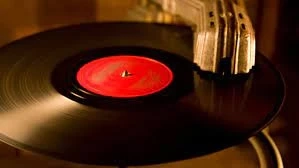In the digital age, where music streaming and MP3s dominate the music industry, there's still a captivating allure to the rich, warm sound and tactile experience of vinyl records. Vinyl has experienced a remarkable resurgence, attracting both seasoned audiophiles and younger generations seeking a more authentic music experience. One question that often arises for vinyl enthusiasts is, "How much music can a vinyl record hold?" In this article, we'll explore the fascinating world of vinyl records, their capacity, and why they continue to hold a special place in the hearts of music lovers worldwide.
Understanding Vinyl Record Capacity
Vinyl records are physical discs made of polyvinyl chloride (PVC) that store audio information in analog form. They come in various sizes and formats, with the most common being 7-inch, 10-inch, and 12-inch records. The capacity of a vinyl record is determined by its size, groove width, and rotational speed (revolutions per minute or RPM).
The standard playback speed for vinyl records is 33 1/3 RPM (commonly referred to as LPs or long-playing records) and 45 RPM (commonly used for singles and extended plays). Additionally, there are 78 RPM records, but they are less common nowadays and mainly limited to early recordings.
As for the amount of music a vinyl record can hold, it depends on the groove spacing and the length of the songs. A typical 12-inch vinyl record can hold between 18 to 24 minutes of music per side at 33 1/3 RPM. However, to accommodate longer tracks with narrower grooves, the playing time per side may be reduced to around 12-15 minutes. On the other hand, 7-inch records typically hold around 4 to 6 minutes per side at 45 RPM.
Vinyl Record Formats: LPs, EPs, and Singles
Vinyl records come in three primary formats: LPs (long-playing albums), EPs (extended plays), and singles. Each format has its own unique charm and usage.
LPs (Long-Playing Albums): LPs are the most common format for vinyl records. As mentioned earlier, a 12-inch LP can hold around 18 to 24 minutes of music per side, making it suitable for full-length albums with multiple tracks. LPs often include cover artwork and offer a complete musical journey for listeners to enjoy.
EPs (Extended Plays): EPs are smaller than LPs and typically feature 4 to 6 songs. They are perfect for showcasing a band or artist's new material, and their shorter playing time allows for a more concise storytelling approach.
Singles: Vinyl singles are usually 7 inches in size and contain one song on each side. They are ideal for popular hit songs, allowing music enthusiasts to collect and enjoy their favorite tracks individually.
Why Vinyl Records Endure
Despite the convenience of digital music, vinyl records have made a remarkable comeback, and their enduring appeal can be attributed to several factors:
Audiophile Experience: Vinyl records offer a superior sound quality, with a warm and authentic sound that digital formats often struggle to replicate. Audiophiles appreciate the unique analog characteristics and the nostalgic crackling sound that vinyl records provide.
Tangible and Collectible: Owning vinyl records is a tangible experience - carefully holding the record, reading the cover art, and placing the needle on the spinning vinyl all contribute to a more intimate connection with the music. Vinyl records also have become a popular collector's item, with limited editions and rare releases becoming highly sought after.
Conclusion
In conclusion, the allure of vinyl records lies in their timeless charm and the authentic musical experience they offer. As we've discovered, the amount of music a vinyl record can hold depends on its size, groove spacing, and rotational speed. Whether it's the warmth of the sound, the tangible nature of vinyl, or the joy of collecting, vinyl records continue to hold a special place in the hearts of music enthusiasts around the world. So, dust off your turntable, start your collection, and let the melodies of vinyl take you on a nostalgic journey through the history of music.


